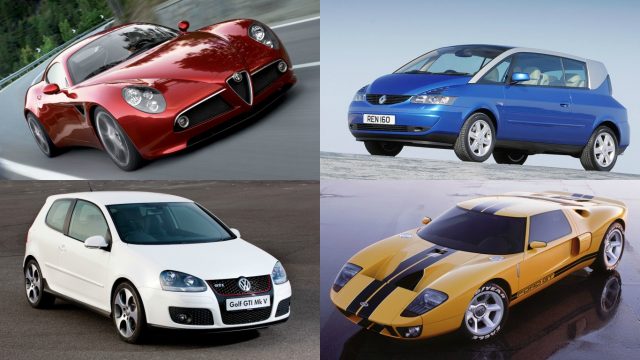 We might be less than two decades into the new millennium, but automotive design has already moved on apace. We’ve picked out 21 cars that demonstrate truly great design since the year 2000. Not every car here is conventionally beautiful, but each showcases innovation, creativity, or the ability to tap into what buyers really desire. Of course, some are also here because they look too good to ignore.
We might be less than two decades into the new millennium, but automotive design has already moved on apace. We’ve picked out 21 cars that demonstrate truly great design since the year 2000. Not every car here is conventionally beautiful, but each showcases innovation, creativity, or the ability to tap into what buyers really desire. Of course, some are also here because they look too good to ignore.
- Barn-find cars on show in Birmingham
- You won’t believe how expensive these old cars are
- 20 embarrassing car publicity photos
2000 MINI Cooper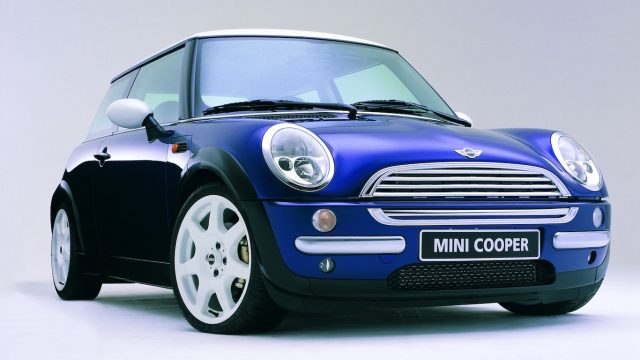
Remember the year 2000? The future was here, everything seemed to be painted silver and BMW had rid itself of the Rover brand. But it kept hold of the jewel in the crown: MINI. Setting the scene for design trends to follow, the R50 MINI Cooper was unashamedly retro, taking elements of the Alec Issigonis original to create a bigger, more modern machine.
Frank Stephenson was responsible for the design, and used classic Mini features such as the chrome grille, white wheels and contrasting roof to make the new car instantly recognisable. A central speedometer, combined with toggle switches, ensured the interior was equally retro-influenced. Although it didn’t push packaging boundaries like the original, it did prove to be hugely successful (and profitable) for BMW.
2001 Renault Avantime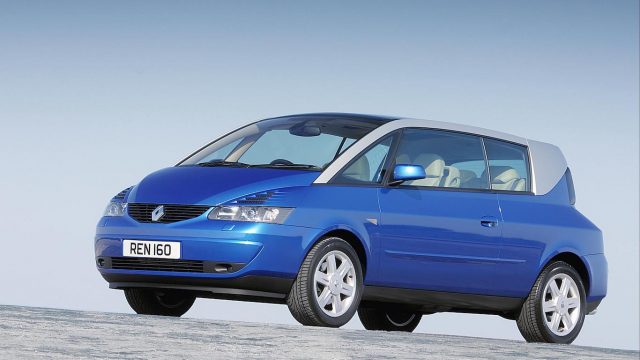
At the turn of the millennium, Renault was in a buoyant mood, pushing its brand towards cutting-edge modernism. Along with the slightly more conventional Vel Satis, the Avantime was Patrick Le Quément’s vision of where Renault should go. But buyers weren’t really interested in making that journey, and only 8,500 were willing to buy one.
With a name that means ‘ahead of time’ the Avantime was just too leftfield, and lasted less than three years in production. Yet its pillarless one-box construction was ingenious, with special double hinges for the giant doors and a button that would retract all the windows and sunroof at once. Good design pushes boundaries, and there is no denying the Avantime did that.
2002 Ford GT40 concept car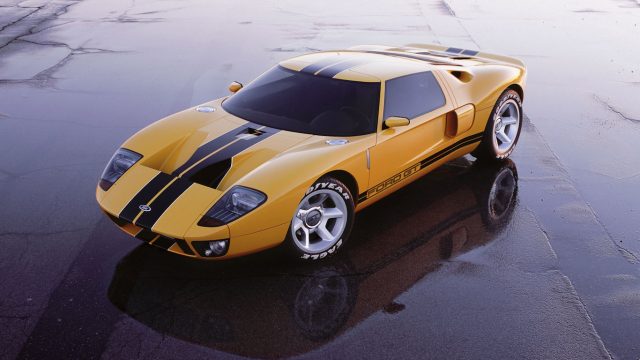
Current focus is on the new Ford GT, but travel back 15 years and the 2002 Detroit Auto Show saw the launch of a special GT40 concept car. Intended to celebrate Ford’s centenary, the design was slavish in recreating the GT40 racer from the 1960s, albeit taller than the 40-inch height of the original. Public reaction was overwhelming, and a production version was prepared virtually unaltered.
Ford was unable to agree terms with the owner of the GT40 name, meaning finished versions would simply be titled ‘GT’. Other changes for the production cars included the addition of a rear bumper to meet impact tests, plus only one fuel filler cap instead of two. While it may have borrowed wholesale from the original GT40, the 2002 concept was unquestionably beautiful.
2003 BMW E60 5 Series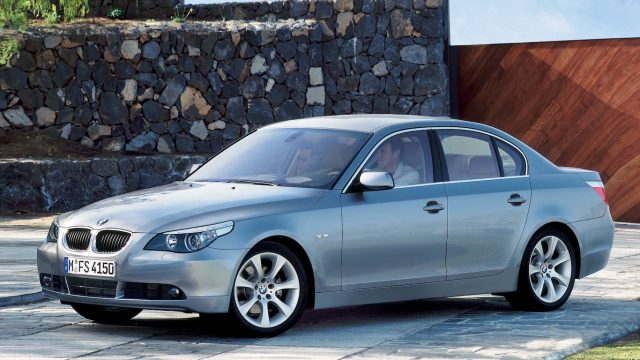
It might seem a little hard to believe, but maybe we were all wrong about Chris Bangle and his tenure as BMW’s chief of design. The E60 5 Series was met with scorn and derision by many, appearing far too radical in looks compared to the previous E39 version. Sharp creases, wraparound headlights and that tailgate all seemed to be very un-BMW like.
But look at the E60 now. This design is almost 15 years old, yet still manages to look modern and, whisper it, actually quite handsome. Over 1.3 million examples were sold between 2003 and 2009, suggesting buyers couldn’t have hated it as much as we were led to believe. Chris Bangle, we’re sorry – you got this one right.
2003 Porsche Carrera GT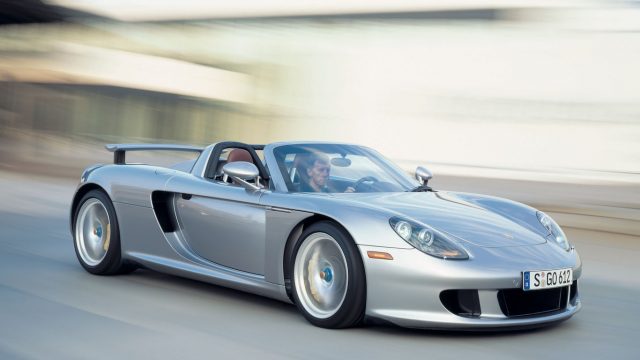
The Carrera GT was the fortunate by-product of Porsche finding itself with a race-spec V10 engine, but no suitable home for it. The motor made its way into the Carrera GT concept car, shown at the 2000 Paris Motor Show. Following a positive reception, Porsche planned a limited production run for the Carrera GT, featuring a 612hp version of the 5.7-litre V10.
With a monocoque chassis built from pure carbon fibre, carbon ceramic brake discs and carbon fibre body panels, the Carrera GT was primarily a lesson in lightweight construction. Styling was dictated by the need to resemble the rest of the Porsche model range, but also incorporate the cooling needs of the V10, along with aerodynamic stability and performance. The result was a hypercar that looks relatively subtle compared to more recent creations, but it was brutally effective.
2004 Alfa Romeo 159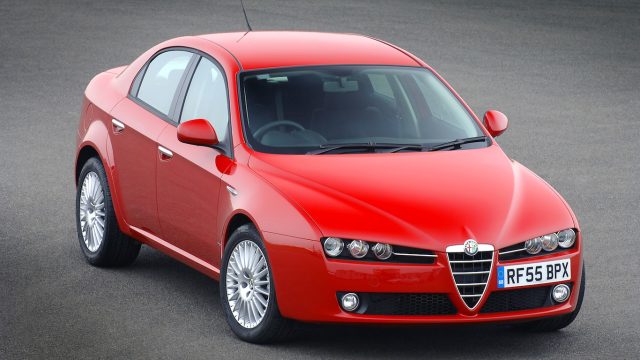
Everyone remembers the Alfa 156. It won European Car of the Year in 1998, gained praise for the clever hidden rear door handle, and featured a distinctive off-centre number plate. This made life hard for the 159 that had to follow it in 2004. Famed Italian designer Giorgetto Giugiaro was the man tasked with the styling job, and he was clearly undaunted by the task at hand.
With direct influences from the Brera concept car of 2002, the 159 retained the central V-shaped grille and off-centre number plate from the 156. Giugiaro produced a cohesive and distinctly Alfa design, while also incorporating the need to make the car larger. Platform development squabbles between Fiat and General Motors would hamper the finished product, but the 159 remained an elegant saloon – on the outside at least.
2004 Aston Martin DB9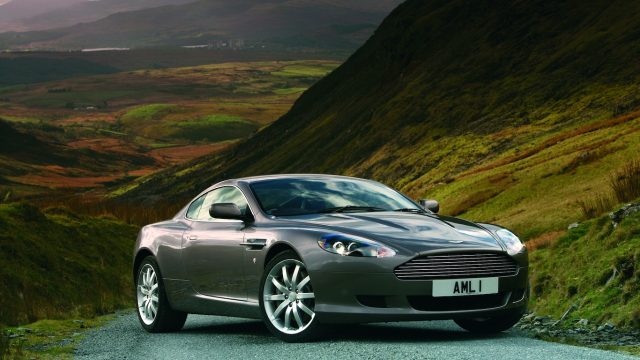
If you have ever complained that all new Aston Martins look the same, then the DB9 is the genesis of that design philosophy. Henrik Fisker’s work would go on to also inspire the V8 Vantage, Rapide, and various other cars also derived from the DB9. That the design was able to continue virtually unaltered until 2016 testament to how right Fisker was in the first place.
The DB9 did without aggressive spoilers and wings, reflecting its GT car nature. Classic Aston Martin elements like the front grille were incorporated into an elegant body. The car gained a unique ‘Sub Zero’ spot on the Top Gear ‘cool wall’, helping cement its place as a design icon.
2004 Chrysler 300C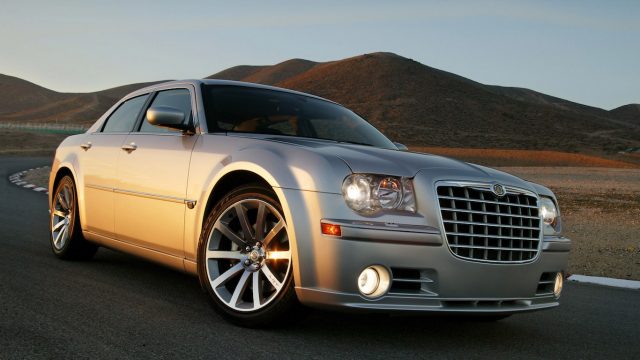
Channelling the ‘Forward Look’ styling language of the Chrysler 300 range from the 1950s, the 300C was another unashamed retro recreation. A huge grille, shallow glasshouse and slab sides endowed the 300C with imposing street presence. More impressive was that it managed to be accepted on both sides of the Atlantic – something American cars have rarely achieved.
So popular was the 300C when launched that it racked up a range of celebrity endorsements. Famous 300C owners included Barack Obama, Snoop Dogg, Dr Dre and Ice Cube, and the car became a staple of hip-hop music videos. We’ll gloss over the trend for owners to replace the regular grille with a Bentley-badged one, however.
2004 Volkswagen Mk5 Golf GTI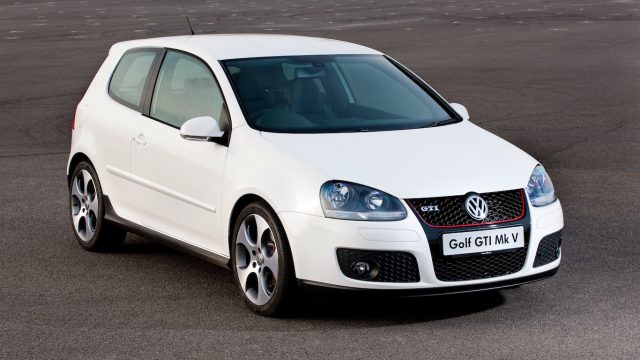
After the criticism of the Mk3 and Mk4 versions of the Golf GTI, Wolfsburg hit back in 2004 with a car that truly lived up to the legacy of the original hot hatch. A comprehensive mechanical overhaul underneath the bodywork helped the Mk5 GTI drive as it should, but the intelligent design changes made it look like it belonged. Honeycomb mesh filled the bumper inserts, while a red stripe paid homage to the grille of the iconic Mk1.
Standard fit 17-inch Monza alloy wheels, along with black plastic side skirts, sharpened up the side profile, while the rear bumper featured twin exhaust tailpipes and a subtle spoiler. Inside, the return of tartan cloth trim made certain there was no confusing the GTI for a lesser Golf.
2006 Audi R8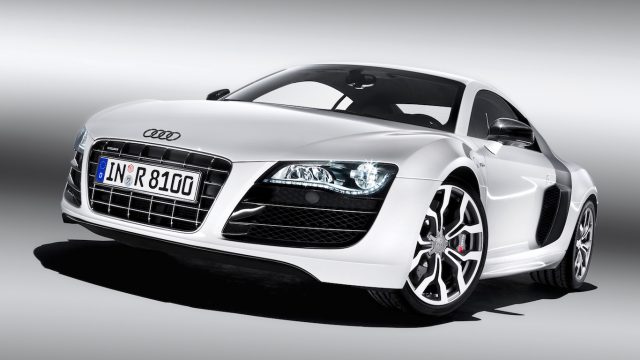
What makes the Audi R8 an iconic design? The fact it shows the confidence of the brand to produce a mid-engined supercar, capable of taking the fight to established rivals like Ferrari and Porsche. The R8 borrowed heavily from the Audi RSQ concept, featured in the 2004 film I, Robot, although obviously it lacked the spherical wheels used in the movie…
Most notable in the design of the R8 were the ‘side blades’ fitted behind the trailing edge of the doors. Offered in a number of finishes, they broke up the flank of the supercar and stopped it appearing like a generic mid-engined machine. They also served a functional role as air intakes for the V8 or V10 engines. Now into its second-generation, the R8 cemented the premium market position of the Audi brand.
2006 Dodge Challenger concept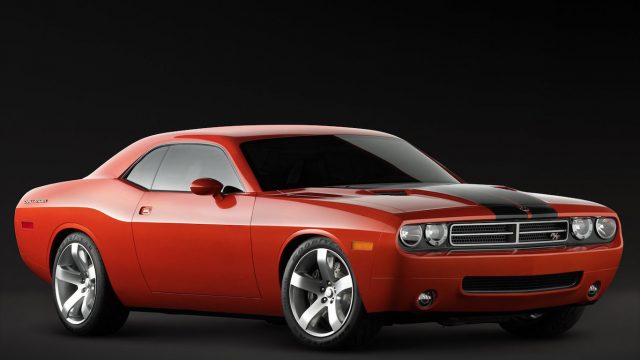
Many cars since the turn of the millennium have used retro touches and influences. However, for the Challenger concept, Dodge went all-out, recreating the classic 1970 R/T model in an almost exact likeness. From the overall shape of the body to details like the quad headlights and front indicators, this was a slavish reproduction. Yet reconstructing one of the most iconic muscle cars can hardly be considered a bad idea.
After being shown at the 2006 Detroit Auto Show, Dodge released the production Challenger in 2008, with minimal alterations from the concept machine. The Challenger Concept was also important for playing a part in the muscle car revival of the late 2000s. With Ford and Chevrolet releasing ‘retro-futuristic’ interpretations of classic muscle cars, a previously dormant segment was recreated for those who could previously only dream of owning an original from the 1960s.
2007 Alfa Romeo 8C Competizione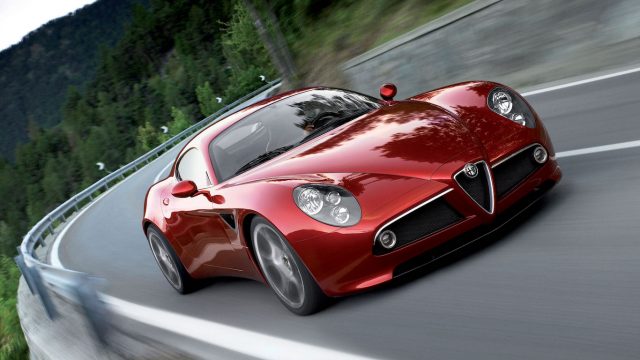
This may well be the most achingly beautiful car on our list. Long of nose, short of tail, and wearing a classic Alfa V-shaped grille, we’ll forgive you if you linger over images of the 8C Competizione for a little longer than most. Originally shown at the 2003 Geneva Motor Show, it took until 2007 for the 500 lucky customers to start receiving their completed cars.
Despite the Italian style, the 8C Competizione was actually created by a German designer – Wolfgang Egger. Under its lengthy bonnet was a Ferrari/Maserati 4.7-litre V8 engine, producing 450hp and an incredible sound. In all honesty, it could have been powered by a 1.0-litre diesel with 50hp and we’d still be begging to have one.
2007 Fiat 500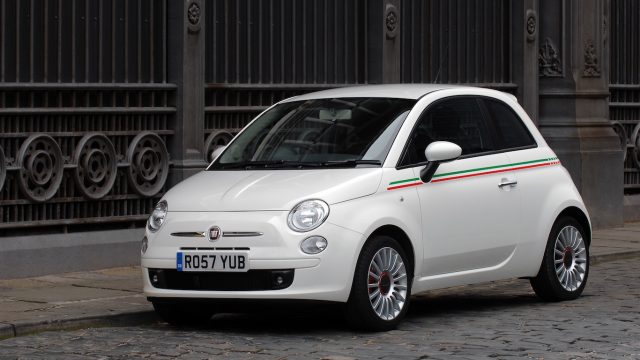
More than 1.5 million Fiat 500s have been sold globally, 250,000 of them in the UK alone. Yet dismissing the new 500 as an obvious choice ignores the fact it has been significantly responsible for propping up the Fiat brand, through faithfully copying the original 1957 car. It’s worth noting that Frank Stephenson, he of MINI Cooper fame, was responsible for creating the finished production version.
The design of the new 500 is not without merit, picking up the city car prize for the World’s Most Beautiful Automobile in 2007, along with the European Car of the Year award in 2008 and World Car Design of the Year in 2009. Whatever your opinion on the 500, that is a substantial set of awards for a car that shares underpinnings with the humble Fiat Panda. It does mean owners should probably stop adding eyelashes to the headlights, though.
2007 Maserati GranTurismo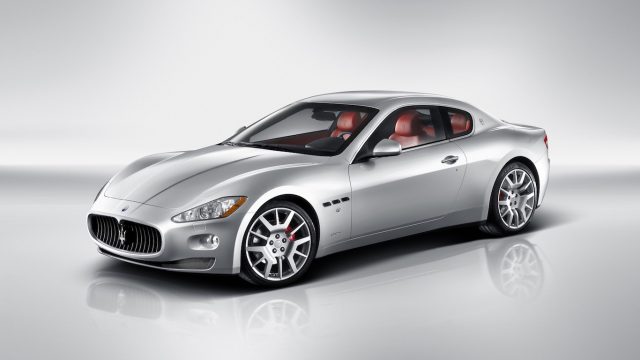
The mid-2000s clearly experienced something of an Italian design renaissance, as we notch up another car from bel paese. Styled by American Jason Castriota while he was working for that most Italian of design houses, Pininfarina, the GranTurismo melded modern and classic styling features. Most notable is the gaping front grille, which wears the Maserati trident emblem.
Beneath a curvaceous design that hides the sheer size of the GranTurismo, the four-seater coupe shares many of its mechanical parts with the fifth-generation Quattroporte saloon. That includes its V8 engine and six-speed automatic transmission, helping the GranTurismo tip the scales at nearly 1,900kg.
2009 Ferrari 458 Italia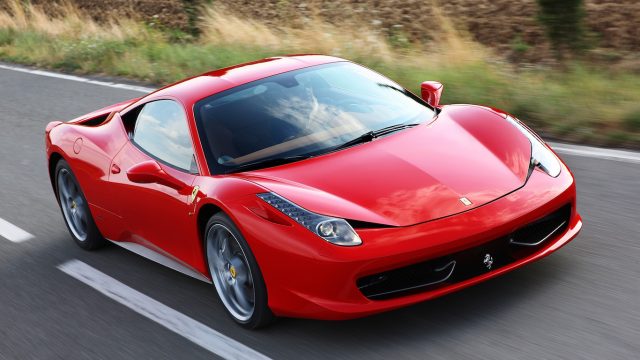
Following on from the F430, which looked a little soft, the 458 Italia was Ferrari at full modern aggression. With design elements like the extended headlights that appeared to take influence from Japanese machinery, the 458 Italia brought the mid-engined supercar bang up to date.
That said, features like the exhaust system with three tailpipes paid homage to the F40, while round taillights continued a mid-engined Ferrari styling feature present since the 1975 308 GTB. Unlike its historic predecessors, the 458 Italia also had to contend with the need for advanced aerodynamics. Deformable winglets inside the front bumper would reduce in size to cut drag at high speed, helping the 458 achieve more than 200mph.
2010 Lexus LFA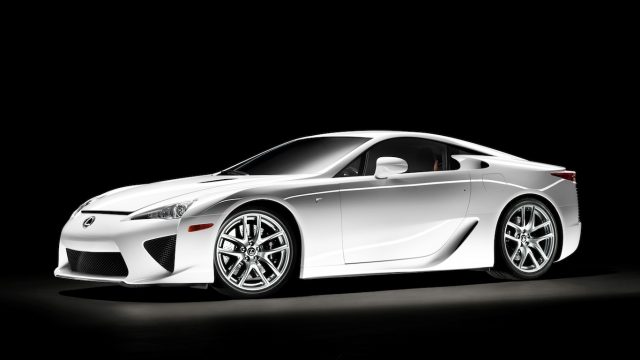
Created by a single-minded desire to produce a halo model to demonstrate the abilities of the Lexus brand, the LFA had free reign to achieve iconic status. Performance was the key factor in shaping it, but the devotion to speed created a car with uniquely stunning looks. Carbon fibre was used extensively, allowing shapes that would not have been possible with metal construction.
Like the Ferrari 458, the LFA also featured three exhaust tailpipes, but stacked vertically. Hidden door handles kept the sides smooth, while even the wing mirrors were designed for aerodynamic optimisation. Lexus admits that a replacement for the LFA is unlikely in the near future, cementing the uniqueness of it as a 21st century design.
2011 Range Rover Evoque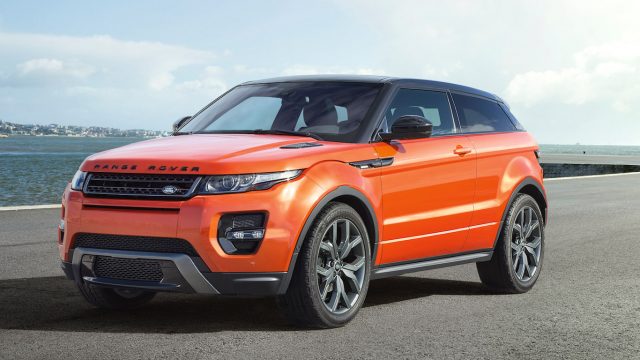
As the smallest model in the Range Rover line-up, the Evoque had a tough brief. It needed to appear a premium product, but be accessible and affordable for urban buyers. A clamshell bonnet and floating roof were key styling elements borrowed from the bigger Range Rover. The use of lightweight aluminium and composite construction helped the Evoque retain a respectable kerb weight for a crossover SUV.
Even before going on sale, Land Rover had attracted some 18,000 pre-orders for the Evoque. Being crowned ‘Best Production Car’ at the 2010 Car Design News awards, along with the 2012 World Car Design of the Year prize, demonstrates how the Evoque was loved by industry critics as well as customers. Despite being some six years old, the Evoque still looks cutting-edge. Although let’s not talk about the convertible version…
2011 Volkswagen Up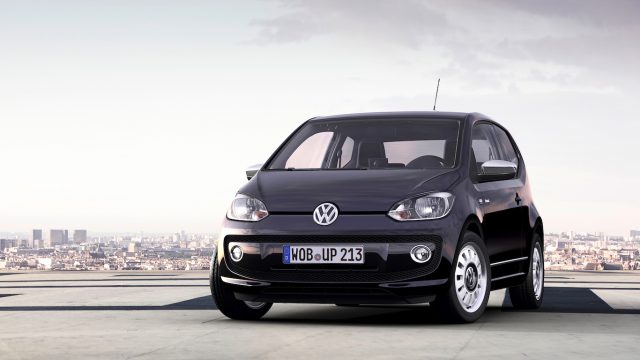
Volkswagen learned a hard lesson after replacing the much-loved Lupo with the Brazilian-built Fox. Whilst buyers might want a VW city car to be affordable, they also want it to at least look expensive. The Up achieved that, with strong lines and a tailgate made from a single piece of glass – a feature borrowed from the Up concept first shown in 2007. This would also mark the Up out against its badge-engineered SEAT and Skoda brethren.
In fact, the Up’s styling replicated the concept car almost unchanged. Underneath, however, it ditched the rear-mounted flat-four engine for a conventional front-wheel-drive setup. The finished Up would take the 2012 World Car of the Year prize, beating both the BMW 3 Series and Porsche 911 in the final round of voting.
2014 Citroen C4 Cactus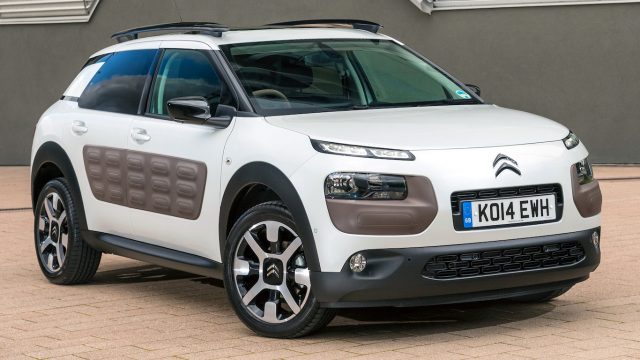
Ferdinand Alexander Porsche is quoted as saying that “design is not simply art, it is elegance of function” and as the man responsible for the shape of the 911, he knew a thing or two about styling. Such a notion also justifies the inclusion of the C4 Cactus on this list. No, it may not be the most conventionally attractive car here, but a devotion to practicality means it stands out in a crowded crossover market.
Cactus buyers are rewarded with clever features like the Airbumps found on the side panels, which not only look cool, but also absorb impacts from shopping trolleys and other car doors. Citroen has also built the Cactus with low weight in mind, making it more fun to drive than you might expect from a utilitarian family machine. It might upset your neighbours in some colour choices, but it lives up to the idea of being elegantly functional.
2015 Jaguar F-Pace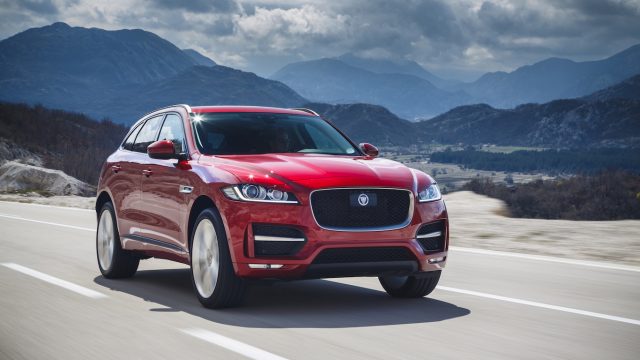
The lure of the SUV is inescapable for contemporary car manufacturers, but there is still a need to ensure it looks like it’s part of the family. Many have tried, but it isn’t an easy task. Just try recalling the first-generation Porsche Cayenne… Thankfully, Jaguar possesses a truly talented designer in Ian Callum, meaning the F-Pace had the best possible start in life. So not only does it look like a Jaguar, but it looks good full-stop.
Ian Callum has led the transition of Jaguar from stuffy traditionalism to contemporary modernism, being responsible for cars such as the XF, XE and the F-Type. The F-Pace borrows features from those three models, with rear lights inspired by the F-Type being the most obvious element used. Becoming the fastest selling car in the history of the Jaguar brand suggests Mr Callum got it right with this one.
2016 Volvo V90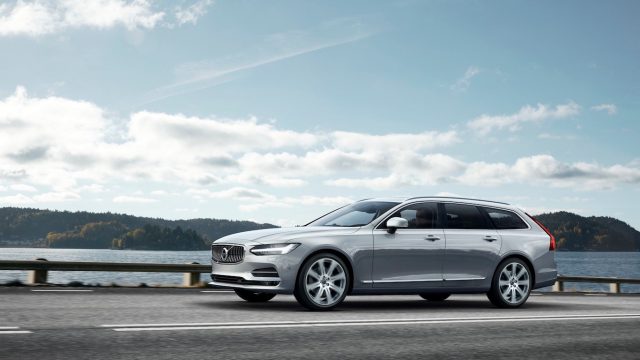
In a world where everything seems to be an SUV or crossover, there is something reassuring about a big estate car. Combine that with ideas of Scandinavian cool and Volvo safety, and the V90 becomes really rather desirable. Having it on your drive means you can pretend to have watched Scandi-noir dramas like The Bridge and Wallander without suffering hours of subtitles.
The S90 saloon version came first, but that somehow isn’t as chic or stylish as the big wagon. The V90 isn’t, admittedly, as practical as previous giant Volvo estates, trading boot space for style. But that’s hardly a Scandinavian crime, and means the V90 can rightfully take its place here as truly great 21st century design.